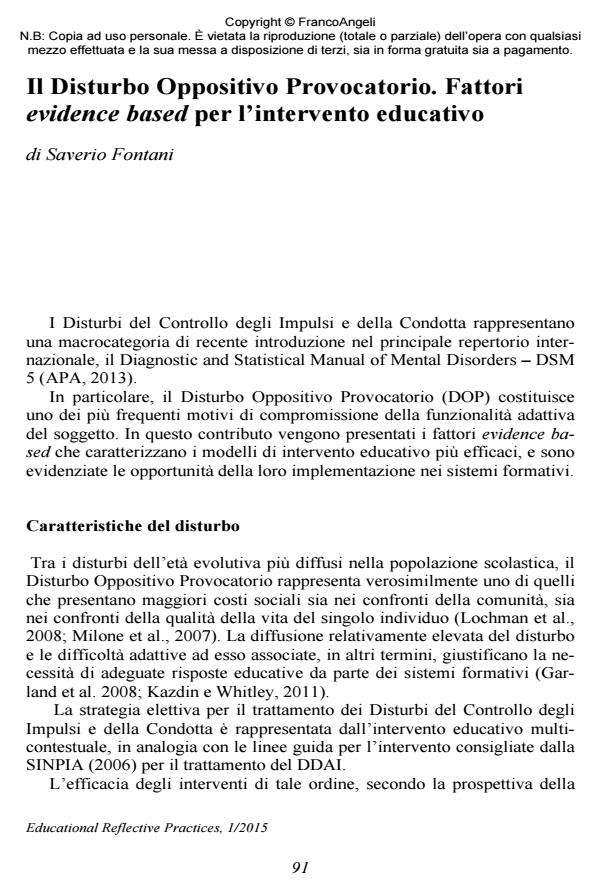Il Disturbo Oppositivo Provocatorio. Fattori evidence based per l’intervento educativo
Journal title EDUCATIONAL REFLECTIVE PRACTICES
Author/s Saverio Fontani
Publishing Year 2015 Issue 2015/1
Language Italian Pages 14 P. 91-104 File size 86 KB
DOI 10.3280/ERP2015-001007
DOI is like a bar code for intellectual property: to have more infomation
click here
Below, you can see the article first page
If you want to buy this article in PDF format, you can do it, following the instructions to buy download credits

FrancoAngeli is member of Publishers International Linking Association, Inc (PILA), a not-for-profit association which run the CrossRef service enabling links to and from online scholarly content.
The Disorders of Impulse Control and Conduct represent a macro category recently introduced in the Diagnostic and Statistical Manual of Mental Disorders- DSM 5 (APA, 2013). In particular, the Oppositional Defiant Disorder (ODD) constitutes one of the most frequent reasons of impaired adaptive behavior of the subject. This article presents the factors that characterize the Evidence Based models of educational intervention more effective, and highlights the opportunities of their implementation in educational systems.
Saverio Fontani, Il Disturbo Oppositivo Provocatorio. Fattori evidence based per l’intervento educativo in "EDUCATIONAL REFLECTIVE PRACTICES" 1/2015, pp 91-104, DOI: 10.3280/ERP2015-001007